The Tramways of
LIMA, PERU
BY
Allen Morrison
PHOTOGRAPHS
BY
Elio Galessio
This website has four parts.
Go to
Part 1: 1864-1904
Part 2: 1905-1927
Part 3: 1928-1965
Part 4: 1997-present
Three decades after the Compañía Nacional de Tranvías ran the last tram in Lima, rail service resumed on a short section of track in Barranco, the residential suburb 8 km south of the city center [see area map].
Electrolima, the local electricity company, opened an electricity museum in Barranco in 1994. The Museo de la Electricidad is situated on the east side of Av. Pedro de Osma, a short distance south of the Barranco town hall and municipal park. It's the yellow building in the picture below [Elio Galessio]:
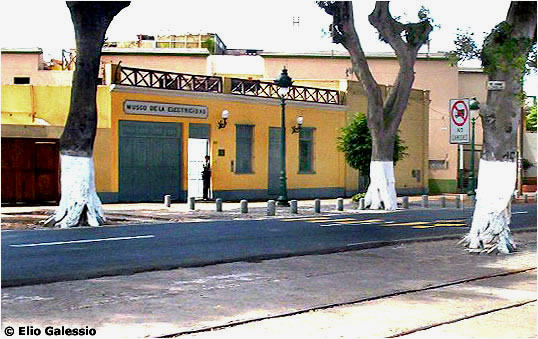
The rails in the foreground, on the west side of Av. Pedro de Osma, were used until 1965 by southbound trams of CNT's Chorrillos line (northbound cars ran on a parallel street) [see map]. Six blocks of exposed, unused tram track inspired a plan for a heritage tram line. In 1996 the Museo found several carcasses of CNT trams in a scrapyard 30 km east of the city [El Comercio, Lima, 22 August 1997]:
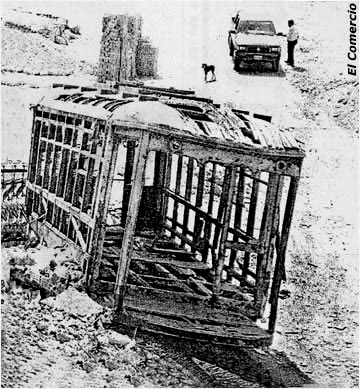
Vehicles of this type were built in the 1920s by Società Ernesto Breda in Milan and ran on the urban lines in central Lima. Larger Breda trams ran on the suburban line that passed through Barranco. [See illustrations of both types in Part 2.] The Museo de la Electricidad rebuilt one of the cars and placed it back in service on the track on the west side of Av. Pedro de Osma on 22 August 1997 [Elio Galessio]:
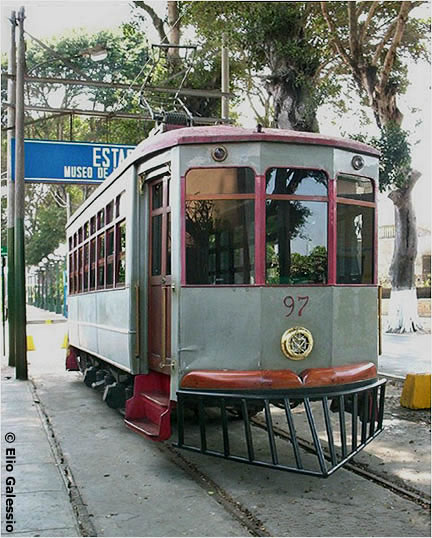
The numeral "97" is fictitious; it refers only to the year the tram was restored. The car had no truck, so Museo engineers built a new one, with four wheels, from parts found on a railroad car [Elio Galessio]:
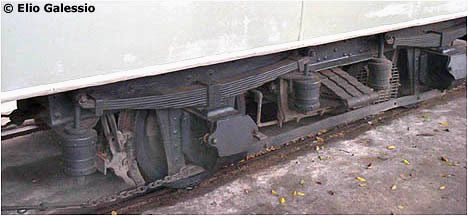
The vehicle had no trolley pole or other apparatus for drawing power from the overhead wire. A former CNT executive designed a "half pantograph" - which was ideal for movements back and forth on the short line [Elio Galessio]:
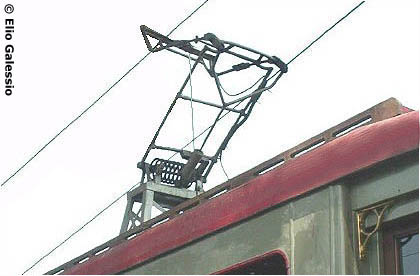
The car is bi-directional or "double end" - has doors, lights and controls at both ends for running both ways on the track [Elio Galessio]:
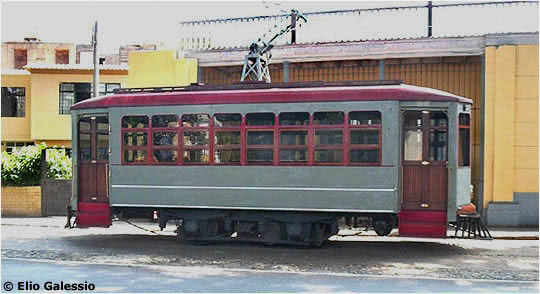
The route of the Vagón del Recuerdo, as it is called - "nostalgia car" - extends six blocks down Av. Pedro de Osma from Calle Castilla to Calle Montero Rosas, near the boundary between Barranco and Chorrillos [see map]. At the station across the street from the museum, visitors begin their "paseos en tranvía" (tram rides) [Elio Galessio]:

The car has doors at all four corners - originally designed for boarding in both directions on Lima's narrow streets. They have been beautifully restored [Elio Galessio]:
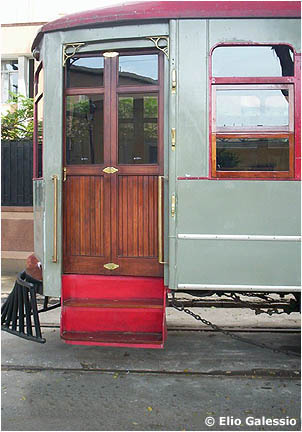
The passenger compartment has both longitudinal and flip-over seats. Seatbacks, like the one right foreground, can be rotated when the direction of travel is reversed. Here are some Austrian tourists [Elio Galessio]:
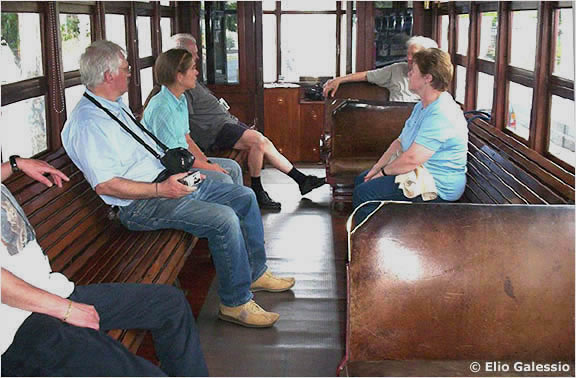
There are controls at both ends of the tram for the motor, brakes and electric lights. The mechanisms were imported from France. Turning the wheel clockwise brings the car to a stop [Elio Galessio]:
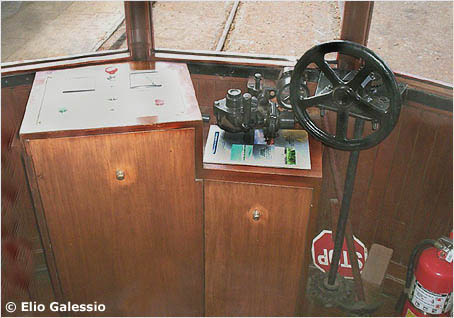
Looking north. These rails were laid in 1907 by the Compañía Nacional de Tranvía Eléctrico (no connection with the CNT), which built the second electric tram route between Lima and Chorrillos [see Part 2]. The 1904 line ran on Av. Grau to the east [see map] [Elio Galessio]:
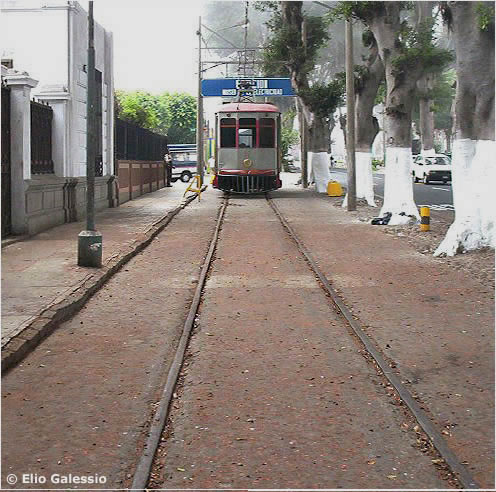
With his left hand on the controller and his right hand on the brake, the motorman prepares to set the tram in motion. [Elio Galessio]:
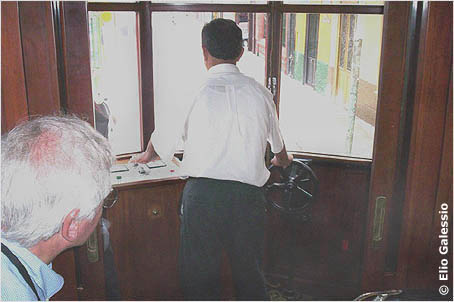
The car begins its journey down Av. Pedro de Osma [Elio Galessio]:
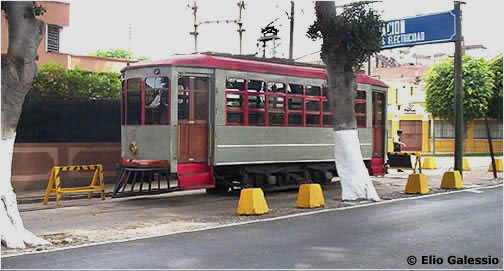
At Calle 28 de Julio, the original tram route had a switch so that cars could make a "short turn" - join the northbound route and return to Lima rather than continue to Chorrillos [see map]. The northbound track was next to the leaning trees, in the spot occupied by the truck extreme left [Elio Galessio]:
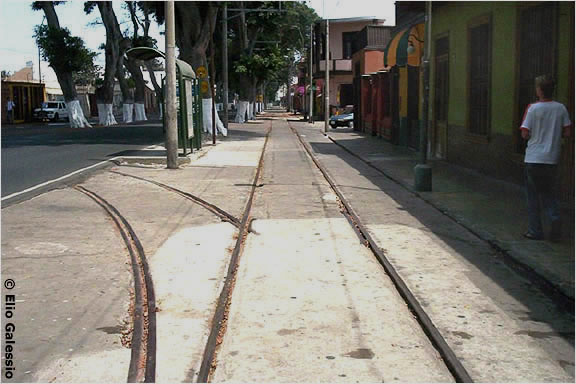
Tram 97 continues straight ahead down Av. Pedro de Osma toward the Chorrillos border [see map] [Elio Galessio]:
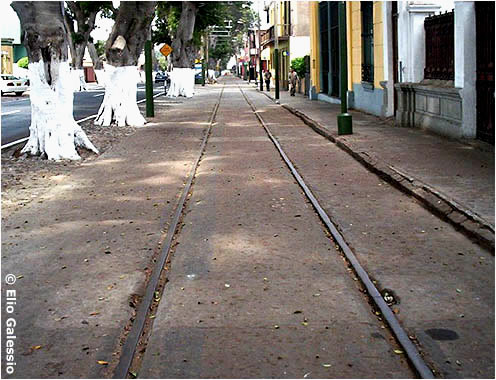
The Museo would like to extend the line into Chorrillos, but so far no progress on that project has been made. On 22 August 2007 the line celebrated its 10th anniversary! The photograph below was taken that year in anticipation of the event. Note that the terminal station has been renamed [Neydo Hidalgo]:
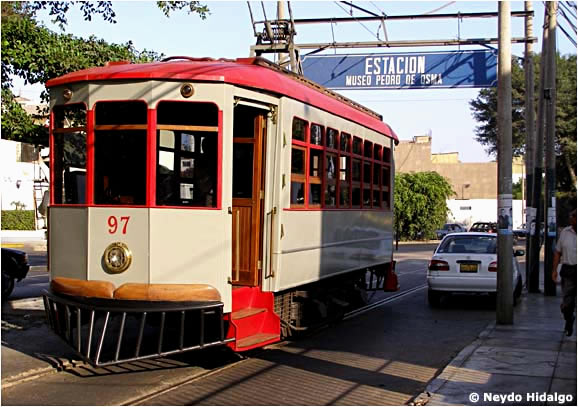
The public is invited! Please come!
Wednesday 22 August 2007!
The author wishes to express his sincere gratitude to Lima residents Elio Galessio and Neydo Hidalgo for their excellent photographs and the information that they provided about the operation of this unusual line.
For information on Lima's earlier tramway history
go to
Part 1: 1864-1904
Part 2: 1905-1927
Part 3: 1928-1965
Most of the photographs on this page were taken on 2 April 2004. The page was first uploaded on 4 April 2004. The last photograph was added on 7 August 2007. Please send comments and suggestions to
Allen Morrison
Visit my homepage about
Electric Transport in Latin America
Copyright © 2004-2104 Allen Morrison - ALL RIGHTS RESERVED
|















